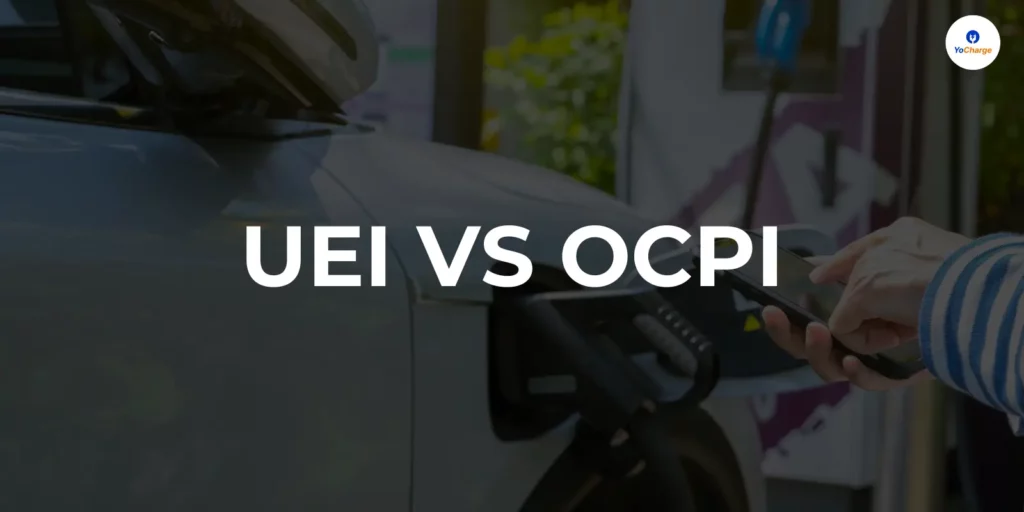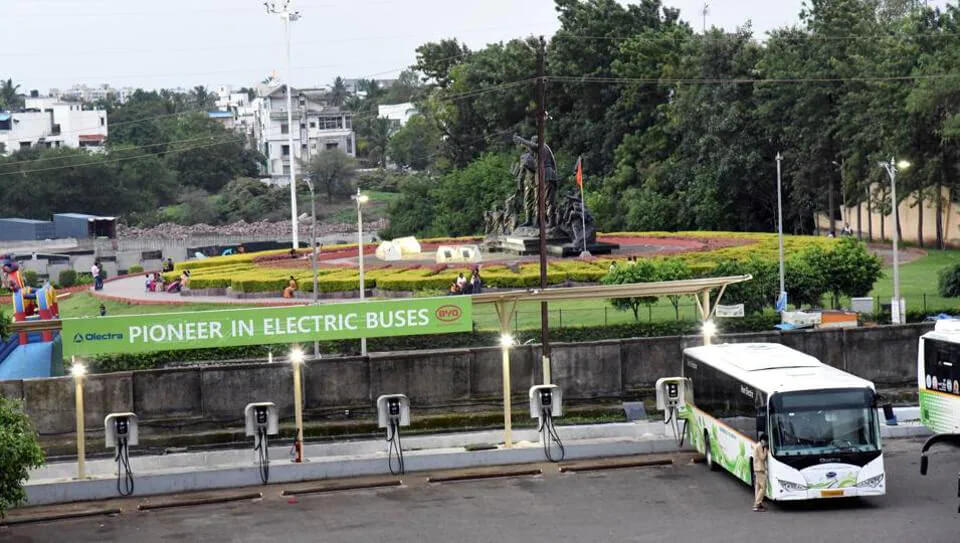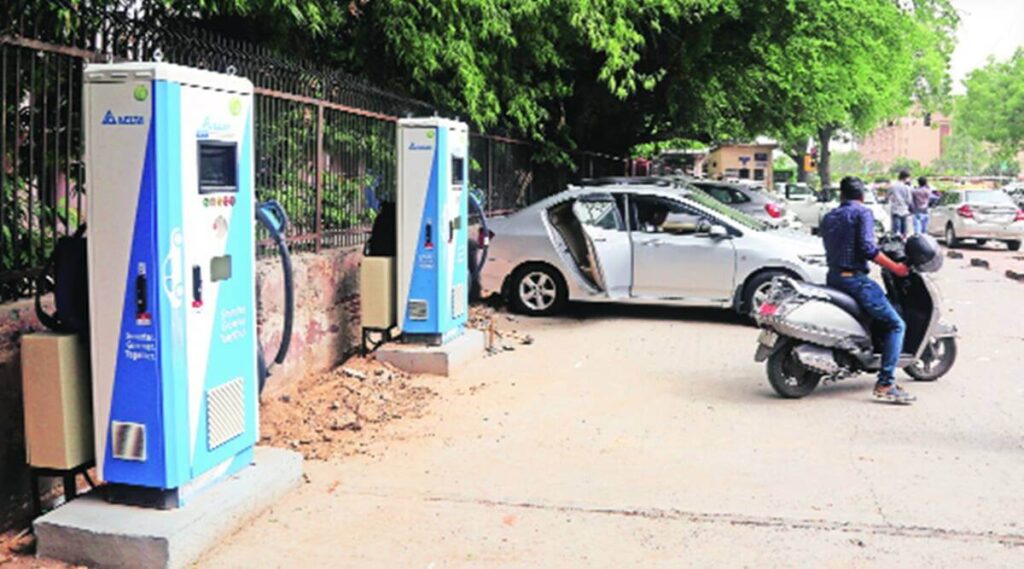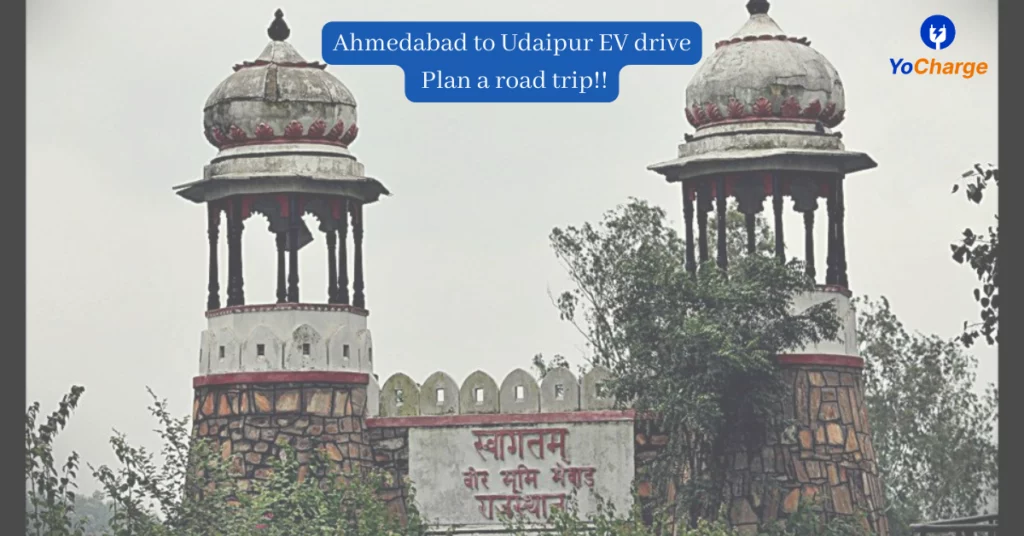
EV’s smooth ride is dependent on the robust EV charging infrastructure. It offers a cleaner and more sustainable alternative to traditional gasoline-powered vehicles. One of the key challenges in EV charging infrastructure is ensuring compatibility between different charging stations and electric vehicles.
Imagine driving your EV across the country and encountering charging stations that are incompatible with your car’s connector type or require you to sign up for a new account with each provider. This is where the concept of UEI and OCPI, two prominent roaming protocols, comes into play.
Interoperability refers to the ability of different systems to work together seamlessly. In the context of EV charging, it means that any EV can connect and charge at any charging station, regardless of the network operator. This is facilitated by roaming protocols, which act as a common language for communication between EVs, charging stations, and various service providers.
This article will explore two prominent roaming protocols, UEI and OCPI. When comparing UEI vs OCPI, it’s important to note that while both aim to make EV charging more convenient, they cater to different needs and have distinct features.
Also Read
The Unified Energy Interface (UEI): Simplifying EV Charging in India
Imagine a world where charging your electric vehicle (EV) is as simple as swiping your debit card at a gas station. This is the vision behind the Unified Energy Interface (UEI), an innovative protocol developed in India specifically to address the challenges of a fragmented EV charging market.
According to a report [ref], the EV charging landscape is currently characterized by a multitude of charging network operators, each with their own payment systems and user interfaces. This fragmentation can be a significant barrier to EV adoption, as drivers may be discouraged by the inconvenience of managing multiple accounts and unfamiliar charging processes.
The UEI aims to bridge this gap by promoting a “plug-and-play” approach to EV charging. Here is how it works:
- Focus on Ease of Use: UEI prioritizes a user-friendly experience. Unlike some existing systems that require setting up new accounts with each charging network, UEI integrates seamlessly with popular existing payment platforms like PayTM and Google Pay. This eliminates the need for additional registrations and allows drivers to pay for charging using their familiar payment methods.
- Integration with Existing Systems: A key strength of UEI is its ability to leverage India’s robust digital payment infrastructure. By leveraging existing platforms, UEI avoids the need to create a whole new payment system, potentially reducing development costs and accelerating nationwide adoption.
The potential benefits of UEI are significant:
- Wider Adoption: By simplifying the charging process, UEI can encourage more people to consider EVs, leading to a faster transition towards cleaner transportation.
- Faster Transactions: Integration with familiar payment platforms can streamline the charging experience, reducing queues and wait times at charging stations.
- Streamlined User Experience: With UEI, drivers can manage all their EV charging needs through their preferred payment apps, eliminating the hassle of managing multiple accounts and logins.
While still in its early stages, UEI holds immense promise for revolutionizing the EV charging landscape in India.
OCPI: Building a Global Network for EV Charging
Imagine driving your electric vehicle (EV) across borders without worrying about compatibility with charging stations. This is the goal of the Open Charge Point Interface (OCPI), an established international protocol that fosters communication and data exchange between different EV charging networks.
Unlike UEI, which focuses primarily on simplifying payments in a specific market, OCPI takes a broader approach. It acts as a common language for various players in the EV charging ecosystem, including:
- Charging Point Operators (CPOs): The companies that own and manage charging stations.
- Electric Mobility Service Providers (EMSPs): Organizations that offer EV charging services to users, often through mobile apps.
- Drivers: The end-users who need to charge their EVs.
Here is how OCPI enhance seamless EV charging on a global scale:
- Standardization: OCPI establishes a standardized set of rules and messages for communication between different networks. This ensures that charging stations from various providers can “talk” to each other and exchange essential information.
- Data Exchange: OCPI focuses on the exchange of critical data points like charger availability, real-time pricing, and station location. This empowers drivers to easily locate functioning charging stations and plan their journeys accordingly.
- Broader Functionalities: While OCPI does not directly handle payments, it goes beyond basic data exchange. It supports features like reservation systems, allowing drivers to book charging slots in advance, especially for high-demand locations. Additionally, OCPI facilitates authorization processes, ensuring a secure and efficient charging experience.
By promoting these functionalities, OCPI fosters a more transparent and user-friendly EV charging landscape. Drivers benefit from greater choice, convenience, and access to real-time information, and more.
UEI vs OCPI: A Comparison Table
| Features | UEI (Unified Energy Interface) | OCPI (Open Charge Point Interface) |
| Focus | Ease of Use & Payment Integration | Standardization & Data Exchange |
| Geographic Reach | India-Specific | Global |
| Development Authority | Ministry of Power, India | Open Charge Point Interface (OCPI) Foundation |
| Deployment Stage | Early Stage (Growing Adoption) | Established & Widely Used |
| Supported Functionalities | Plug-n-Play Payment Integration Integration with Existing Payment Platforms (e.g., PayTM, Google Pay) Basic Charging Session Management | Charger Availability & Status Updates Real-time Pricing Information Reservation & Authorization for Charging Sessions CPO (Charging Point Operator) Identification & Branding Metering & Energy Transfer Data Fault Reporting & Diagnostics |
| Data Security | Focuses on secure integration with existing payment platforms | Implements standard security protocols for data exchange |
| Interoperability With Existing Systems | Designed for seamless integration with existing Indian payment infrastructure | Requires integration with existing network management systems |
| Technical Complexity | Relatively Simpler (Focuses on Payment Workflow) | More Complex (Requires Protocol Implementation) |
| Scalability | Well-suited for large-scale adoption within a unified payment ecosystem | More scalable for diverse charging networks globally |
| Open Source | Not Open Source (Developed & Managed by Government Authority) | Open Source Protocol (Freely Available for Implementation) |
| Cost Of Implementation | Potentially Lower Costs due to Integration with Existing Systems | Implementation Costs can vary based on network complexity |
| Benefits | Faster & More Convenient User Experience Wider Adoption due to Existing Payment Platform Integration Streamlined Charging Transactions | Standardized Communication between Charging Networks Improved Network Visibility & Management Enables Advanced Features like Reservations & Real-time Pricing |
| Limitations | Limited Geographic Reach (Currently India-Specific) Focuses Primarily on Payment Integration May Require Additional Development for Advanced Features | Requires Network-Level Integration & Implementation May not be ideal for regions with existing, well-integrated payment systems |
Final Thoughts about UEI and OCPI
The rise of electric vehicles requires a strong and user-friendly charging infrastructure. This article discussed two main protocols, UEI and OCPI, addressing interoperability in EV charging. UEI prioritizes ease of use for the Indian market by integrating with existing payment platforms, while OCPI focuses on global communication and data exchange between diverse charging networks.
The choice between UEI and OCPI depends on specific needs, with UEI being advantageous for fragmented markets like India, and OCPI ideal for establishing global interoperability. As the EV landscape evolves, the development of interoperable protocols like UEI and OCPI will be crucial in simplifying charging processes and promoting collaboration for a more accessible, convenient, and sustainable electric mobility future.



